Inebriation and Intoxicants
Gold-Fermented Champagne
Here's a new thing for rich people to spend their money on! Winemaker Leclerc Briant has announced that it's producing the world's first-ever champagne that will be fermented and aged in a gold barrel. In fact, it's apparently the first wine of any type to be aged in gold. It'll go on sale in 2021.But why gold? The winemaker explains in an interview with thedrinksbusiness.com:
In response, the folks at thedrinksbusiness.com noted that they "struggled to understand how the gold would affect the fermentation, other than providing an inert and impermeable container for the process."
Of course, it probably won't change the flavor at all. But it's gold, so it will certainly affect the price!
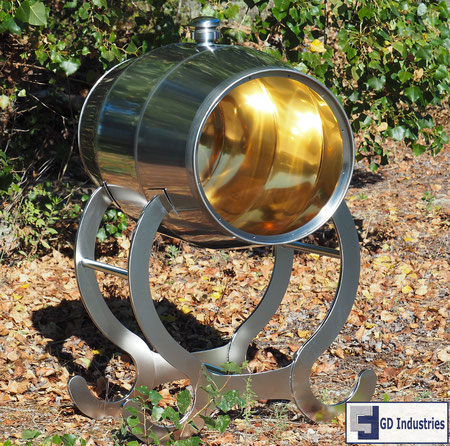
Posted By: Alex - Wed Feb 27, 2019 -
Comments (4)
Category: Inebriation and Intoxicants, Overpriced Merchandise
Miller Vortex Bottle
Many of you might remember the Miller vortex bottle. Its selling point was that the neck was ribbed on the inside, which supposedly allowed the beer to pour out faster. Apparently there just wasn't a large enough community of speed drinkers who cared about this to allow the vortex bottle to be much more than a passing gimmick.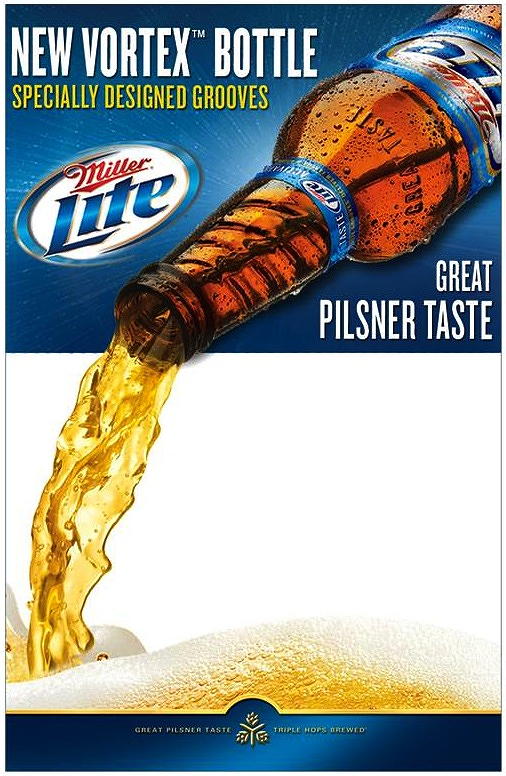
Posted By: Alex - Mon Dec 17, 2018 -
Comments (4)
Category: Business, Advertising, Inebriation and Intoxicants
Drunken Walking
Actually, although it sounds odd to study the problem of drunken walking, I wouldn't want to trivialize the problem. There was a case just recently here in San Diego of a young college student who decided the quickest way home from the bar was to walk across I-8. She didn't make it.

Tallahassee Democrat - Jan 1, 1994
Posted By: Alex - Thu Dec 13, 2018 -
Comments (0)
Category: Inebriation and Intoxicants, Weird Studies and Guides, 1990s
Miller Clear Beer
One of the most notorious marketing failures in the beer industry: Miller's decision to create a beer that not only tasted like water, but looked like it as well. It was an outgrowth of the "clear craze" of the 1980s and 90s (making transparent products because, as wikipedia notes, "clarity was equated with purity and freedom from artificial dyes").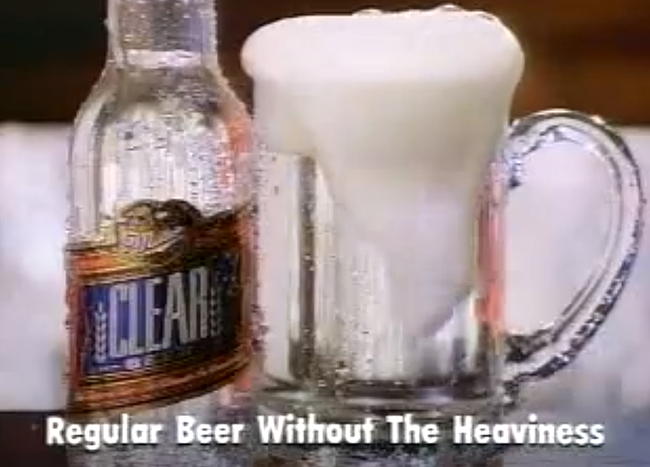
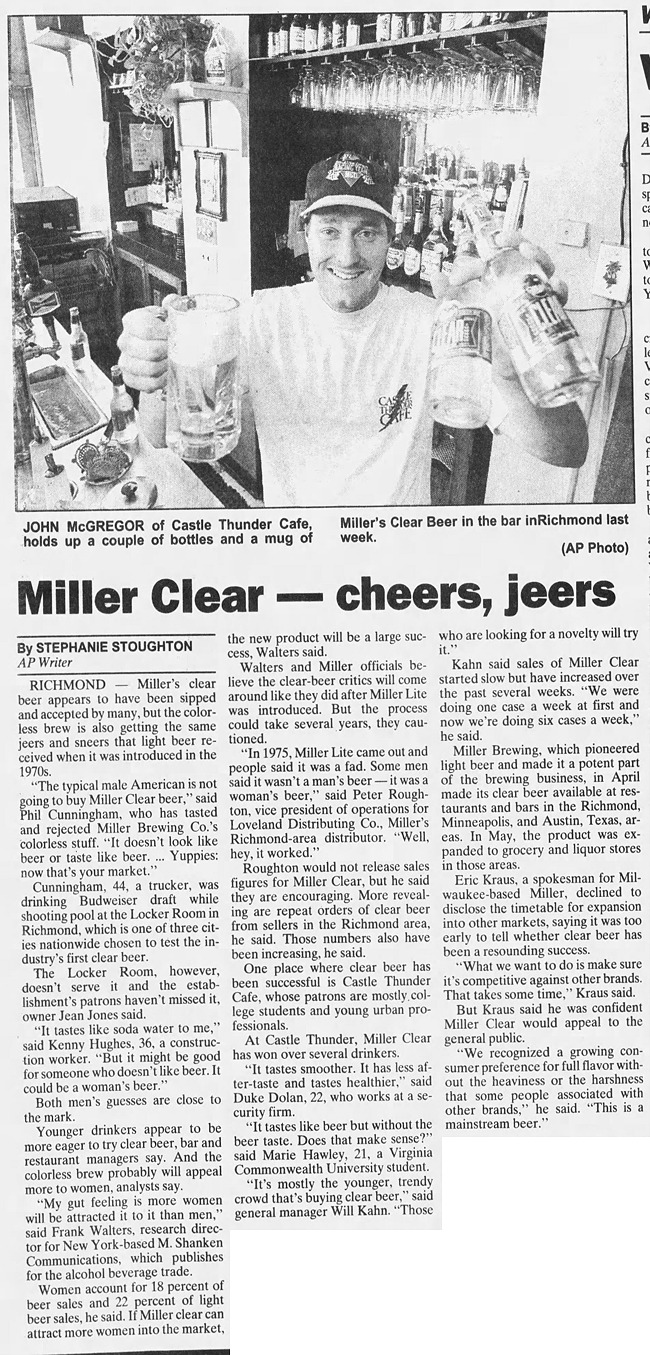
Staunton News Leader - June 27, 1993
Posted By: Alex - Thu Nov 29, 2018 -
Comments (3)
Category: Inebriation and Intoxicants, Products, 1990s
Malt Duck
Introduced in 1972, this was a combination of beer and red grape juice. So, like a beer-wine, which sounds odd to me, but apparently it had quite a few fans. It stayed on the market through the 1980s, and in 2016 the Sprecher Brewing Company decided to bring back a new version of it altered to appeal to "contemporary taste preferences."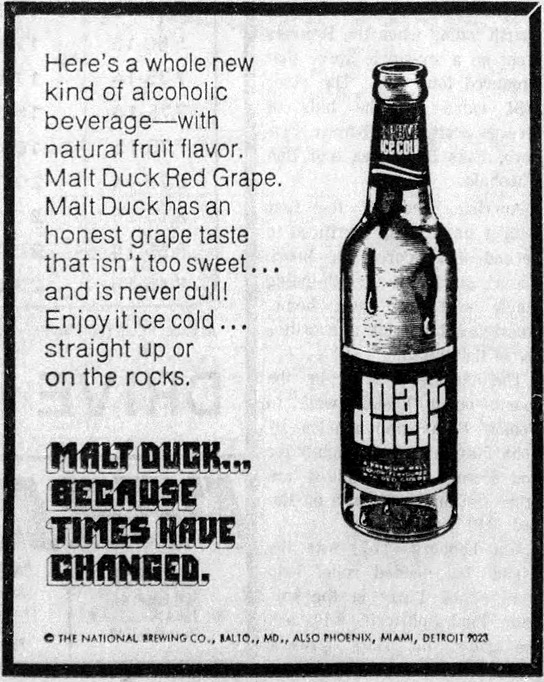
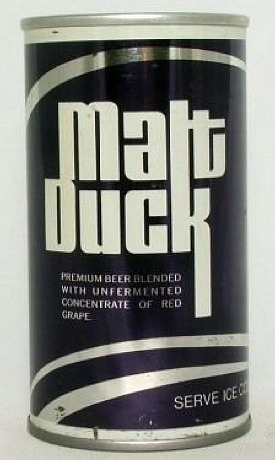
A review of its modern incarnation:
Posted By: Alex - Mon Aug 06, 2018 -
Comments (7)
Category: Inebriation and Intoxicants, Alcohol
Cognac and yogurt
Not a combination that would have occurred to me. But who knows. Perhaps it was really good.
Apparently this product was, like Touch of Yogurt Shampoo, an attempt to cash in on the yogurt craze that was sweeping America at the time.
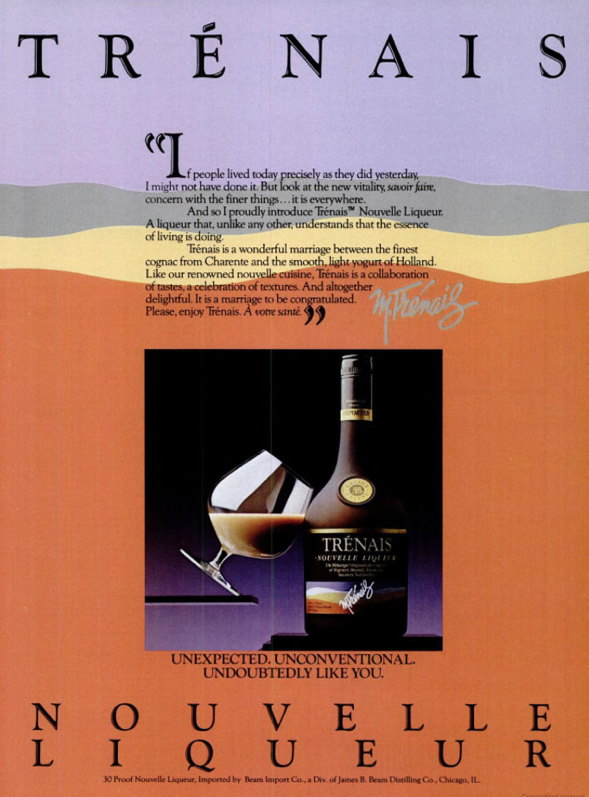
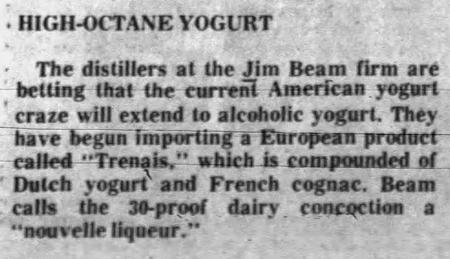
The Santa Clarita Signal - Aug 24, 1983
Posted By: Alex - Fri Apr 06, 2018 -
Comments (5)
Category: Inebriation and Intoxicants, 1980s
Sanatogen Tonic Wine
Back in 2016, Paul posted some ads for Sanatogen Tonic Wine from early in the 20th century. Here are some more ads for this fine product, but from later in the century (1960s), in which the marketing team decided to focus on how this medicinal wine was the cure for a housewife's blues. Feeling bored at home, run-down by the kids? No problem, just take a little swig of Sanatogen and you'll be numb to your problems in no time! "That's lovely... that's better"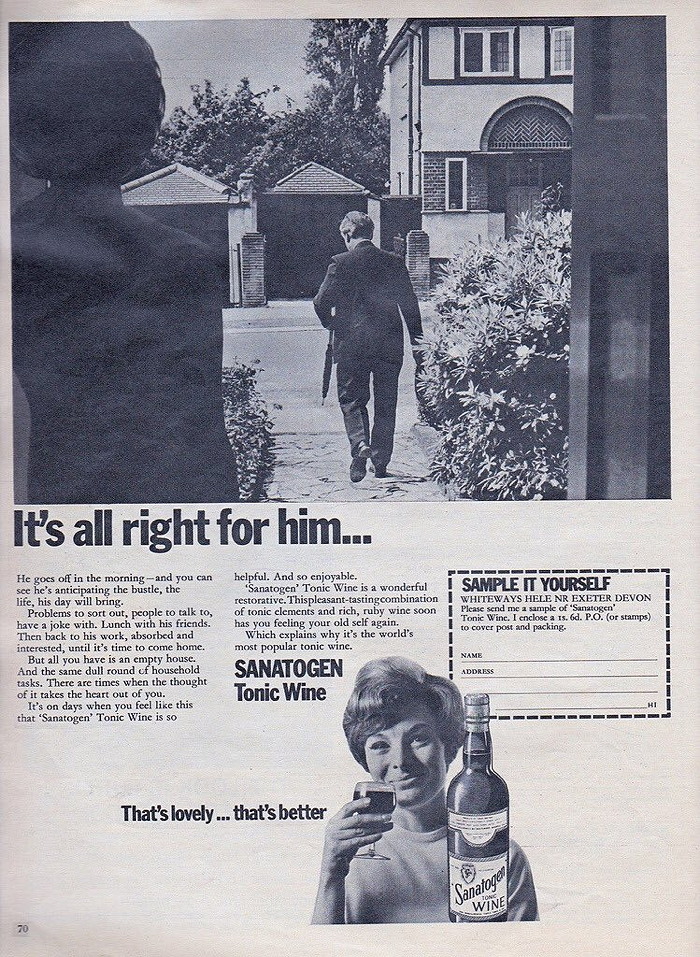
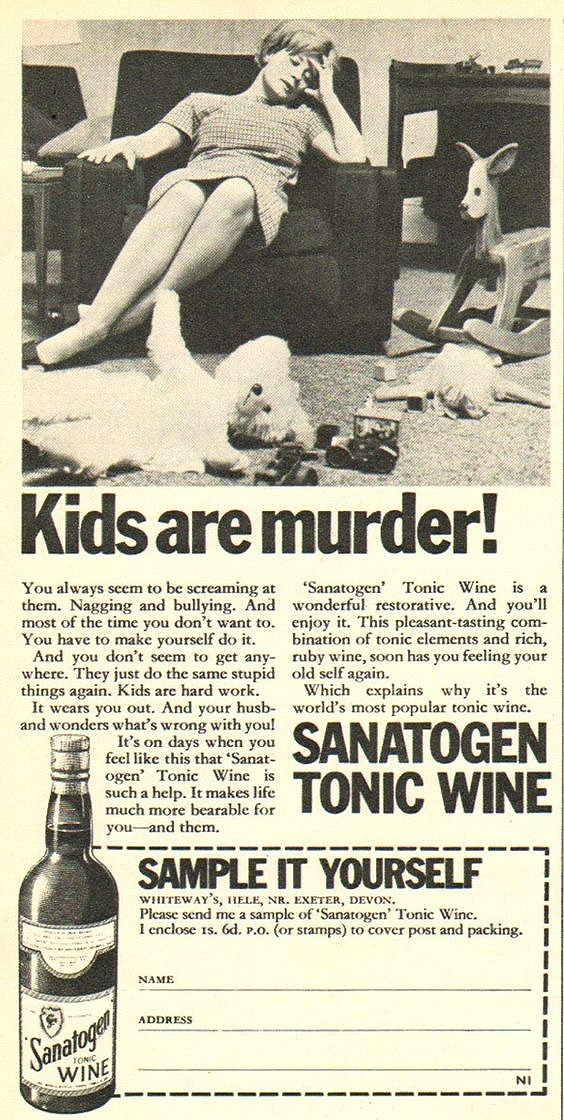
Posted By: Alex - Sat Mar 31, 2018 -
Comments (3)
Category: Inebriation and Intoxicants, Advertising, 1960s, Alcohol
Wine on Tap, version 2.0
We've previously we've posted about wine on tap in hotel rooms. Such as the Hotel Terminus in France, which in 1953 ran pipes through the walls to achieve this.There's now a more high-tech alternative. The Plum Dispenser is a $1500 gadget that stores several bottles of wine, but dispenses a glass at a time — allowing hotel guests to buy a single glass in their room rather than a whole bottle. It's basically wine on tap. Though the prices aren't cheap:
$16 for 5 ounces of wine? You could go to a local supermarket and buy an entire bottle for that.
More info: North Bay Business
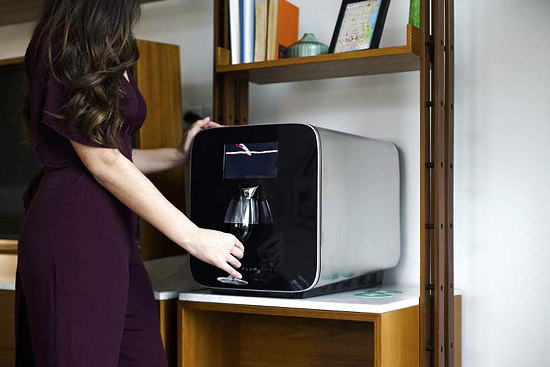
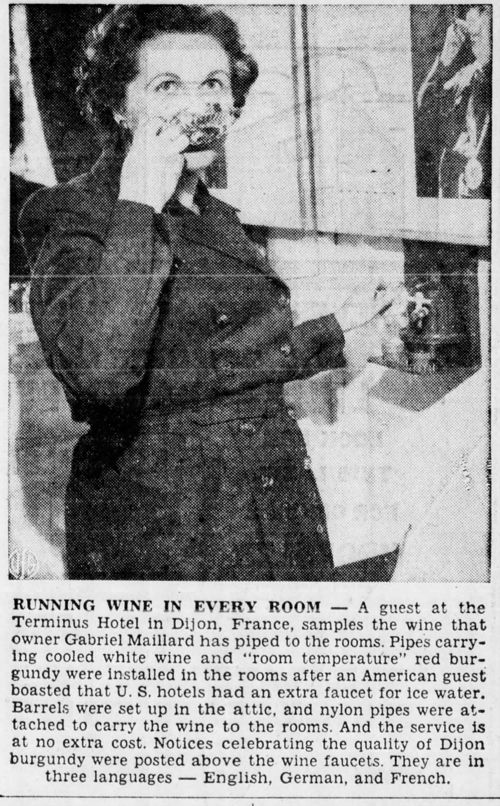
The Evening Sun (Hanover, Pennsylvania) - Jan 7, 1954
Posted By: Alex - Mon Mar 12, 2018 -
Comments (3)
Category: Inebriation and Intoxicants, Inventions
Karen Eland - Coffee Artist
Artist Karen Eland specializes in painting with coffee and beer. I think that the coffee painting came first, and she later diversified into beer.It makes me wonder how many other drinks it's possible to paint with. Wine? Whiskey? Coke? Root Beer?
Her website: KarenElandArt.com
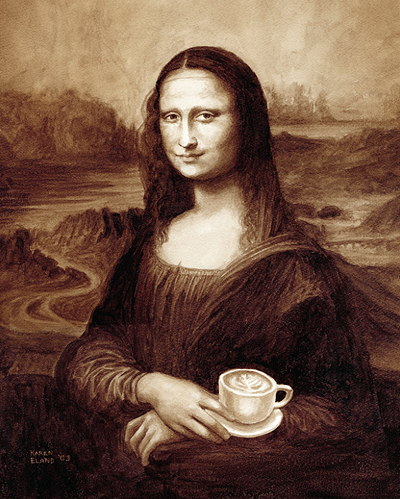
Mona Latte, 1998
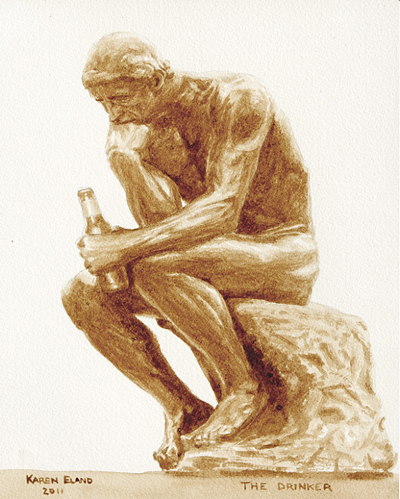
The Drinker, 2011
Posted By: Alex - Sun Sep 24, 2017 -
Comments (0)
Category: Art, Inebriation and Intoxicants, Coffee and other Legal Stimulants
Drank Embalming Fluid

The Lima News - Feb 2, 1919
This 1919 news report of two railroad employees who drank from a barrel of alcohol, not aware that it was being used to preserve two human skeletons enroute to a medical school, sounds a lot like the "corpse in the cask" urban legend.
The legend, which dates back at least to the nineteenth century, played on the fear of accidental cannibalism. As explained by Jan Harold Brunvand in his Encyclopedia of Urban Legends:
In one version of the tale, following the Battle of Trafalgar in 1805 the body of Lord Nelson was preserved in a barrel of brandy, from which sailors sipped as it made its way back to England, inspiring the expression "tapping the admiral."
Posted By: Alex - Tue Oct 04, 2016 -
Comments (3)
Category: Death, Inebriation and Intoxicants, 1910s

| Who We Are |
|---|
| Alex Boese Alex is the creator and curator of the Museum of Hoaxes. He's also the author of various weird, non-fiction, science-themed books such as Elephants on Acid and Psychedelic Apes. Paul Di Filippo Paul has been paid to put weird ideas into fictional form for over thirty years, in his career as a noted science fiction writer. He has recently begun blogging on many curious topics with three fellow writers at The Inferior 4+1. Contact Us |




